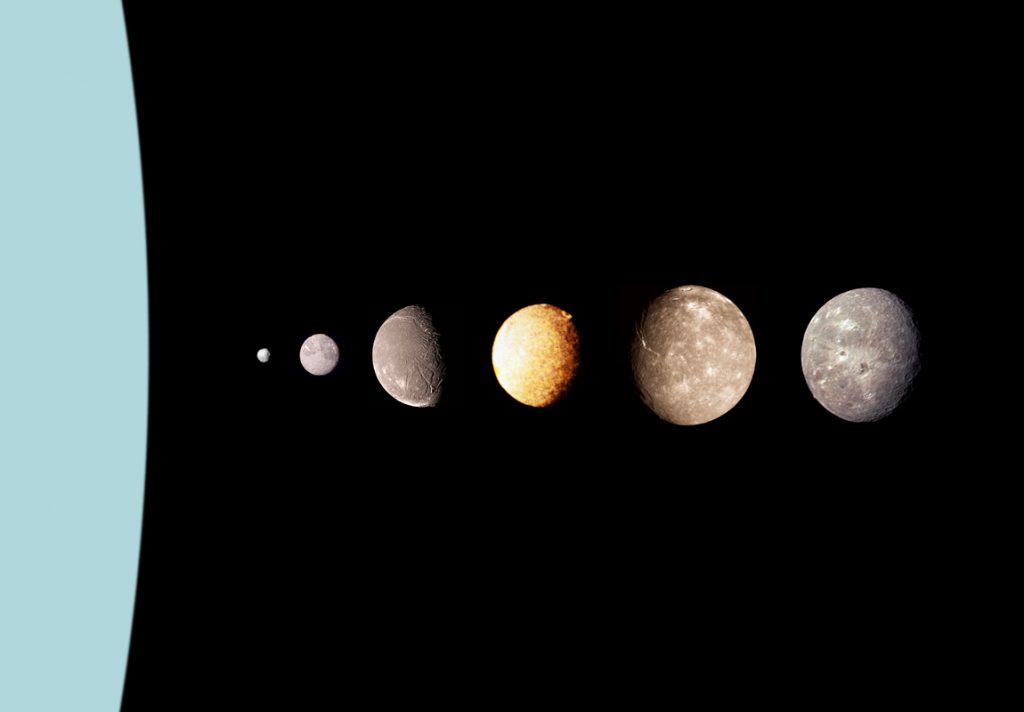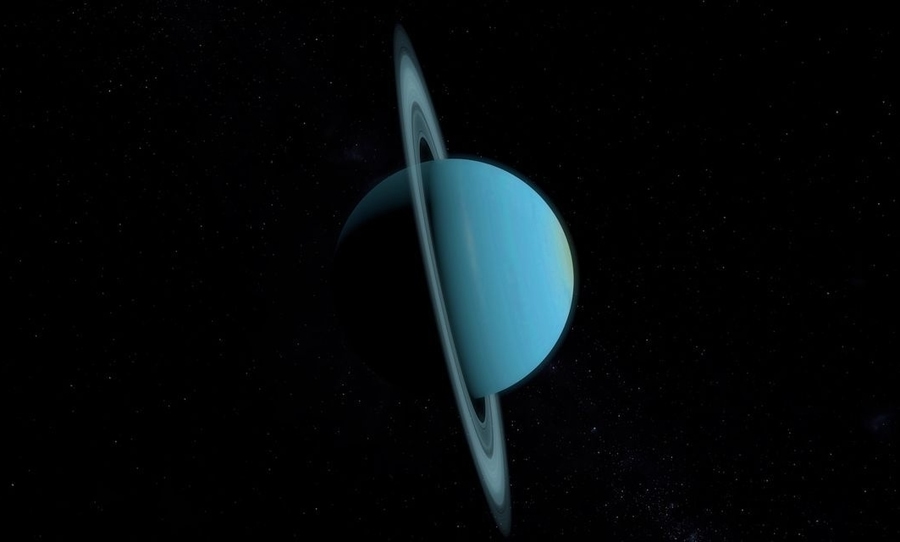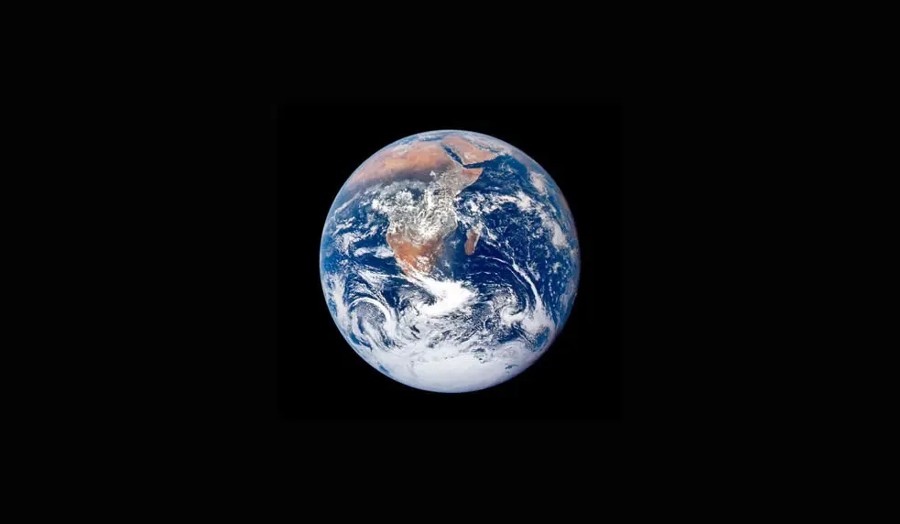Earlier this week we reported that NASA scientists who had been looking back through decades-old data from the Voyager 2 spacecraft discovered a mysterious gas escaping from Uranus.
In light of that, we thought we’d bring you some of the most interesting facts about the planet, and there’s a lot.

Having an extremely punable name isn’t the only thing that makes Uranus worthy of the spotlight. Check out 6 mindblowing facts about our very own gassy neighbour.
Uranus is wonky
Ok, in all seriousness – whilst the other planets rotate around the sun neatly on their axes, some with slight tilts, Uranus is bascially the town drunk when it comes to orbiting. Scientists believe that something massive collided with the planet billions of years ago, completely knocking it over on its side.
Jupiter has a tilt of around three degrees, and Earth has a slightly greater one of 23.5. In comparison, Uranus is tilted to around 98 degrees. Whilst the other planets rotate like spinning tops, Uranus pretty much looks like it’s just rolling around in space. This also means its equator is almost at a right angle to its orbit.
One year lasts 84 earthly years
Whilst it takes Earth 365 days to orbit the sun, it takes Uranus roughly 84 times that to do the same. That means one year on Uranus lasts for 84 Earth-years.
It gets even crazier though. Each season lasts for 21 years on Uranus, however, due to its weird orbit, the entirety of summer sees the light of the sun and the whole of winter is shrouded in darkness. During the other two seasons, there’s a night/day progression similar to Earth, with each day lasting about 17 hours.
Basically this means that for half of the year, a single day lasts for 21 years and a night lasts for another 21. So you could be 42 years old and only have lived one day and one night. Cue Lionel Richie, All Night Long.
Uranus was almost called George
Uranus was discovered by a man called William Herschel who started out in life playing the oboe. Born in 1738, Herschel picked up astronomy as a hobby and discovered Uranus in 1781. Imagine your main job being an oboist and casually discovering a planet in your spare time?
At first, Herschel thought that it was merely a comet or star, but with the help of fellow astronomer Johann Elert Bode, they deduced that it was, in fact, a planet. Hershel was the first person in history to discover a planet with a telescope. After his discovery, he finally decided to make astronomy his full-time gig.
Herschel wanted to name the star Georgium Sidus, honouring the king of the time, King George III. However other scientists weren’t so keen on the name. Bode suggested the name Uranus – the Greek god personifying the sky – and it stuck. It’s funny to think that if 239 years ago, the planet had been named George, we would never have been able to write this headline.
The planet doesn’t have a surface (it’s also freezing cold and windy)
Uranus and Neptune are the two ice giants of the outer solar system. As an ice giant, Uranus doesn’t actually have a surface – most of the planet is made up of swirling fluids. This means that if a spacecraft tried to land on the planet it wouldn’t be able to, but it also wouldn’t be able to fly through the atmosphere as the pressure and temperature would destroy it.
80% of the planet’s mass consists of a fluid of hot “icy” materials – water, methane, and ammonia – with a small rocky core at the centre of the planet, which is extremely hot (about 4,982 degrees Celsius). The atmosphere is mostly made up of hydrogen and helium, and a small amount of water and ammonia. The planet gets its blue-green colour from sunlight being absorbed by the methane gas in the atmosphere.
Uranus is the coldest planet in the solar system, with its atmosphere reaching a minimum temperature of -224.2 degrees Celsius. The planet can also get incredibly windy. The highest wind speed ever recorded on Earth was 407 kilometres per hour during Cyclone Olivia in Western Australia in 1996. In comparison, winds of up to 900 kilometres per hour have been observed on Uranus.
Uranus has 27 moons
Whilst it doesn’t have as many as Jupiter’s whopping 63, so far astronomers have spotted 27 moons. They’re mostly small, and the inner moons seem to be half water ice and half rock, but the composition of the outer moons isn’t known.
Uranus is the only planet whose moons aren’t named after figures in Greek and Roman mythology. Instead, Uranus’ moons are named after characters in the works of William Shakespeare and Alexander Pope. You can check out a picture of Miranda, Ariel, Umbriel, Titania, and Oberon below.

Yes, Uranus is leaking gas…
Finally, in case you missed it, it was recently announced that Uranus is leaking gas. The gas in question was, in fact, a giant plasma bubble – or plasmoid – 127,000 miles long and twice as wide (or, to put it another way, a width ten times the Earth’s circumference). The plasmoid contained part of the planet’s atmosphere.
Whilst only one such secretion was recorded, scientists think that these could be occurring every 17 hours, every time the planet completes a rotation. This means Uranus’s atmosphere is being slowly drained. But could that spell bad news for the planet? Probably not.
Paul Byrne, a planetary geologist at North Carolina State University, described: “Even with moderate gassiness, it’s likely that Uranus will be able to hold on to most of its atmosphere for the remainder of the solar system’s life.”
Apparently, “Uranus just has that much gas.”



